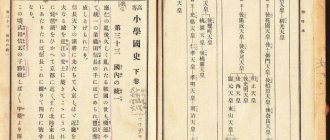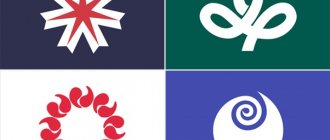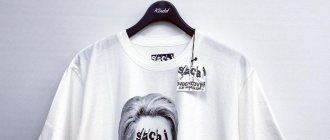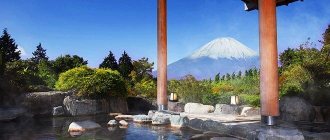Ama - Japanese pearl divers
Japan is an ancient island country, so it is not at all surprising that the life of a significant part of its population is connected with the sea. But among ordinary fishermen, who have been going to sea on boats for thousands of years to catch their catch with a fishing rod or net for food, there is a separate maritime profession, or rather a caste of divers, called the Ama.
The Ama woman (Japanese for "woman of the sea") is a Japanese diving profession that dates back over 2,000 years. Even 200-300 years ago, the Ama went into the depths naked, at best wearing a loincloth - fundoshi and a hair band - tenugui, which is confirmed by numerous engravings of artists of that time working in the ukiyo-e genre. The Japanese have always been alien to embarrassment from their own or others' nudity. In the late Middle Ages, the natural beauty of Ama was contrasted with the artificial beauty of the courtesans of Edo and Kyoto.
Until the 1960s, many ama, especially in villages along Japan's Pacific coast, continued to dive in fundoshi alone. These remarkable women were captured by the Japanese photographer Iwase Yoshiyuki in his series of photographs taken on the Chiba Peninsula in the first half of the twentieth century. He spent his childhood in one of the fishing villages and, having matured, returned to his native land to photograph those women who had not yet abandoned the ancient fishery. His works were rarely exhibited outside of Japan, but with the advent of the Internet, everyone could appreciate them. Ama, which in Japanese means “man of the sea,” harvests not in coastal waters, but on the seabed, diving 15–20 m, and sometimes 40–50 m. The first written mention of Japanese ama appears dating back to the end of III century BC e Chinese work “Translation of the People of the Wei Records of Wei.” At one time, the Chinese were deeply amazed by Japanese mermaids - ama women - diving into the depths of the sea. Ama are predominantly young women, since it is believed that it is easier for them than for men to stay in the water for a long time and not get hypothermic, thanks to the developed subcutaneous fat. Modern divers have special protective suits, and in some regions - fins and masks; they usually dive to a depth of 15 - 20 m.
The Ama live in communities in their villages and practice professional breath-hold diving using traditional methods that date back to ancient times. Previously, they dived without fins, holding a 10-15 kg weight in their hands, or using small lead bars attached to a belt (the prototype of the modern weight belt). They were tied to the boat with a long rope passed through a block. Having reached the bottom, the woman removed the ballast, which was immediately pulled to the surface by her comrade, and quickly began collecting. At the right moment, she pulled the rope, and the man in the boat literally pulled her out of the water as quickly as possible. Today's technology has not changed, except that they wear an isothermal suit and fins. The breath holding time is from 45 seconds to a minute, but if necessary it can reach two minutes. Classic ama divers used minimal equipment, usually wearing only a fundoshi (loincloth) to help them move through the water and a tenugui (bandana) around their heads to cover their hair. Tenugui were sometimes marked with good luck talismans to protect the diver from evil spirits. The divers who went the deepest additionally tied a weighted belt around their waist, which made the dive easier. The most important tool for abalone divers was the tegane, also known as kaigane, a sharp, shovel-shaped tool used to detach the stubborn abalone from the rocks. In an attempt to protect abalone and prevent overfishing, breathing apparatus was banned by fishing cooperatives, of which all commercial ama divers were required to belong; the ban is still in effect today. The working season lasted from May 1, when the sea water was still riddled with winter cold, until the beginning of September. During these half-year dives, life for Ama revolved around his Amagoya hut. Here, divers gather in the morning, prepare for the day ahead, have breakfast, chat and check their equipment. After diving, they come back to the hut to shower, relax and warm up the body, recovering from the day’s work. There is an atmosphere of relaxation and camaraderie at Amagoya: for six months a year, women are freed from the usual expected family and social responsibilities, reconnecting with other women who share their love of the ocean and diving. Amagoya is also a place where new divers learn. Unlike other traditional crafts, there is no apprenticeship principle in Ama. Although diving skills such as breathing techniques are relatively easy to learn through practice, the most valuable knowledge - the best places to hunt abalone - is a secret that even mothers and daughters carefully keep from each other. However, by listening to more experienced divers talk about their day in the amagoya, novices can slowly gather important knowledge about the local reefs and thus figure out where to find abalone in abundance. Although the ama harvest different types of edible fish such as seaweed, shellfish and sea urchins, abalone remains the most valuable and profitable. Unfortunately, with the decline of natural abalone stocks, the ama's income has also declined. Despite attempts by fisheries cooperatives to conserve precious resources by limiting diving hours, the number of bags allowed and the volume of catches, external factors such as pollution and global warming have harmed the environment and reduced the abalone population.Although in the past it was possible to make a living from underwater abalone fishing alone, these days diving for ama is just a supplementary income to a main occupation such as farming or other work.
For six months of the year, women are free from normal family and social responsibilities and can be with friends who share their love of the ocean and diving. In the past, career opportunities for women in a small village were limited, and married women were expected to remain at home under the watchful eye of their mother-in-law. Therefore, life as an ama diver was an attractive prospect, despite the harsh conditions and potential dangers. They earned quite a decent amount of money. When working in shallow waters, where fish stocks are largely depleted, a diver earned up to $150 a day, and at depths of 20 meters - 3 times more. During a season of such work you can earn several tens of thousands of dollars. Ama was often the main breadwinner for the family! During the heyday of abalone hunting in the 1960s, a skilled ama could earn at least US$80,000 in a six-month diving season. As a result, talented amas were considered an extremely profitable match and could choose their own husbands among local men. But nowadays there are fewer and fewer people willing to do such work. In Shirahama, where 1.5 thousand divers worked 40 years ago, now less than 300 people are engaged in this fishery. Their average age is 67 years old, the youngest is 50, the oldest is 85 years old!
There are now several museums and exhibitions around the world dedicated to the brave women of Ama: Ama Museum in Japan, Maritime History Museum, Ama Huts, Live and Eat with Modern Ama.
How pearls are actually mined and why it is an unprofitable business
Welcome! And again, the most interesting thing is about how pearls are mined, in which countries and what difficulties the freshwater pearl fishery has faced over the past centuries in Russia.
You will find out why pearl plantations in the world are a labor-intensive, risky, but still profitable business.
At the same time, you will be able to understand why in Russia the process of growing in freshwater bodies is practically unprofitable.
A small educational program about how a pearl is formed in nature
Do you know what pearls are? If you think that this is a precious jewelry stone, you are partly right. Indeed, pearls are classified as a group of mineral stones of animal origin. Surely you have heard about ama divers in Japan. Previously, they used their hands to extract shells from the bottom of the sea, many of which actually had pearls inside.
Do you think that pearls are still mined using the same method today, and that all other mother-of-pearl beads are simply fake? Here is the error. In the modern world, people rarely risk their health for the sake of earning money. Almost all pearls available for purchase are grown independently. They do not fake it as wild, but rather grow it in the shells of live mollusks.
This method significantly simplified the process and increased the scale of production. There is no longer any need to explore the seabed, raising thousands of oysters, of which only a few hundred will have pearls inside and only dozens will have beads suitable for sale.
The world is no longer looking for an answer to the question of how to get pearls, but they are growing them on farms like potatoes. And all because several hundred years ago people learned to stimulate mollusks to produce nacre to create a valuable “pea”.
How pearls are mined: methods and places of extraction
Pearls are the most common and attractive mineral. It is actively used by jewelers. Many people are interested in the topic of how pearls are formed and why their extraction is such a labor-intensive and time-consuming process.
Now the reserves of shellfish, in which the stone is formed, are depleted, since massive oyster fishing is carried out on the planet.
Nuggets grown artificially are almost identical in properties to their marine counterparts.
What are pearls
This is a solid biogenic formation that has a round or irregular shape. It forms inside the shells of certain mollusks. The mined pearls are beautiful in shape and have a unique mother-of-pearl shell that seems to shimmer.
Pearls are not as hard and durable as crystalline stones, although they are quite resistant to the chemical components of the air and products of human activity.
The mineral has a unique palette; it is capable of producing a color tint effect. The most common are spherical varieties of pearls, although oval, pear-shaped or teardrop-shaped ones are also found.
But the cost of the specimen increases sharply precisely with its spherical shape.
Important parameters of a natural nugget are gloss, color and surface interference. 120 varieties of this stone are classified according to the color palette alone.
The most common is silvery white, although pink, yellow or cream shades are often found. Oyster catchers also come across blue, black or green pearls.
The color is affected by the composition of the water, the depth of the mollusk, and temperature conditions.
How to get pearls
First, let's look at how pearls form in a shell. A layer of aragonite gradually forms around any foreign particle that gets inside the mollusk. Later it is covered with a hundred similar layers.
All voids present between the crystals of a chemical compound (calcium carbonate) are necessarily filled with proteins. Because of this, the shell becomes extremely durable. The top layer contains only aragonite, thanks to which the pearl has a pearlescent luster.
Now we have figured out how natural pearls are formed.
Nowadays the stone trade in the form it was in ancient times has practically disappeared. It is grown on specialized farms, since people have learned to stimulate the mollusk themselves so that it produces nacre. If previously only chance led to the entry of a foreign body into the shell, now this process is controlled by a person.
Extraction methods
Direct extraction occurs from the seabed. Divers make many dives per day, catching only a few first-class pearls. They lift about a ton of oysters, which causes irreparable damage to nature.
Industrial cultivation. Several methods have been developed to obtain sea or freshwater pearls:
- transplantation of a graft into the mantle or gonad of a mollusk;
- use for growing the central core;
- use of a nuclear-free method.
Production stages
During direct mining, people perform the following actions:
- At the site of an extensive accumulation of mollusks, swimmers dive, plunging to a depth of up to 20 meters.
- Divers make a lot of dives to find a pearl shell.
- The catchers' equipment is a large basket secured with a rope to the boat, swimming masks, scuba gear, and wetsuits.
Modern industrial mining involves enclosing a small body of water on farms. Shellfish are distributed over it with organic foreign objects implanted in them in advance. Young oysters are grown separately.
Large specimens are placed on the surface of nets that sway on the surface. The farm territory is divided into plots. They collect pearls every 7 years.
Once the shells are caught, they are kept in the sun for several days to simulate the heat treatment process.
Where is it mined?
Modern seabed jewelry mining occurs in the Persian Gulf and Red Sea. Japanese, Chinese, Indian and Ceylonese divers also continue to work. Valuable types of stone are brought to the surface off the coast of Indonesia, in the Gulf of Mexico, the Caribbean Sea, and near the island of Tahiti.
Pearl cost
Judging by expert estimates, the market value of pearls is influenced by the following factors:
- labor costs when growing shellfish;
- remoteness of the farm from sales points;
- customs duties.
Natural pearls in the Philippines are valued at $900 per strand. The same amount of farm-grown pearls will cost much less. The price of just one natural pearl extracted from the Red Sea ranges from $1,000 to $10,000.
Pearl jewelry
The following types of pearls are used for jewelry:
- freshwater, mined in Russian rivers, reservoirs of North America, Germany and China;
- pearls from the southern seas near Australia, Polynesia, the Philippines, Indonesia and Myanmar;
- stones from the seas near Japan - they are most valued because they have a beautiful shine.
Precious material in jewelry is used independently or as an insert. Therefore, two product options are distinguished:
- necklaces, pendants, bracelets and frameless necklaces;
- rings, earrings and pendants with a metal frame.
Precious or simple metals are used as jewelry settings. Their choice is influenced by the origin and quality of the pearl.
When purchasing a product with pearls, you need to carefully select it, since the jewelry is not suitable for all people:
- for women with dark skin types, only golden or peach pearls are suitable;
- ladies with fair skin types should opt for pinkish stones;
- It is desirable that the shade of the mineral be in harmony with your wardrobe or eye color.
An assortment of pearls of any type and cost is sold on the domestic market. The price of jewelry is determined by the origin of the stones and their quality. It is also affected by the material of the frame used.
How to distinguish real from fake
Since pearls are a rare stone, they are actively imitated. There are different types of fakes, but it’s not difficult to check them even on your own. Evaluate the color, appearance, weight and surface cleanliness of the pearl product:
- Natural stone is heavier than artificial stone. Inside the natural mineral there is mother of pearl, while in a fake product the core is made of plastic or other light artificial material.
- A real mineral has a uniform shine. It is easy to identify a fake by the presence of dullness or uneven shine.
Additional verification methods:
- If you have individual pearls in your hands, do a simple test - you need to drop a pebble from a height of half a meter. When struck, a real mineral bounces back like a ball. The artificial stone will roll across the floor.
- Rub the pearls against each other with little force. There will be scratches and small particles of powder on your fingers. They are easy to remove; just wipe the surface of the pearl with your palm.
- Place the suspect material in acetone. The fake will begin to dissolve in it.
- To ensure the authenticity of the purchased stone, it is better to visit a jeweler who will accurately determine the authenticity.









